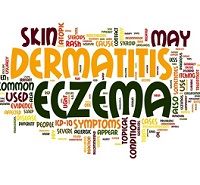Article
Atopic Dermatitis: New Drugs Needed
Author(s):
Options for treating atopic dermatitis topically are far too limited, a review has found.

A recent review of the advances in topical therapies for atopic dermatitis (AD), finds that options are limited, and more are needed. The review was conducted by Jonathan Silverberg, MD, PhD, MPH, of Northwestern University Feinberg School of Medicine, in Chicago, IL, and colleagues, was published in the Journal of Dermatological Treatment.
There are three goals in treating AD, according to the authors, who say those goals are “improving the skin’s barrier function, suppressing inflammation, and relieving pruritus.” Topical therapies have a lower risk of adverse events, and the reviewers say, “the most commonly used topical treatments include emollients, corticosteroids, and calcineurin inhibitors.”
Emollients prevent transepidermal water loss, and also improve the effectiveness of topical corticosteroids. However, they may also cause “folliculitis, sweat retention, stinging, and irritation,” say the authors.
Topical corticosteroids (TCSs) are the most commonly-used therapy for AD, described by the authors as “the mainstay treatment for moderate to severe AD since the early 1950s.” One drawback of TCSs is that prolonged treatment can lead to systemic adverse events, and AD is often a chronic and recurrent condition requiring years of treatment. TCS withdrawal is another concern which can actually exacerbate the symptoms of AD after use of TCS is stopped.
Topical calcineurin inhibitors (TCIs), in the form of tacrolimus ointment and pimecrolimus cream “limit inflammation by inhibiting the activation of T lymphocytes, resulting in reduced expression of proinflammatory cytokines,” according to the reviewers. They have been in use since 200-2001. TCIs are preferred for long-term use because they do not have the same risk of adverse events as TCSs.
However, a warning that there may be an association between TCIs and an increased risk of lymphoma, which is in question, along with a lower range of efficacy than TCSs, “make long term treatment with TCIs somewhat challenging,” say the reviewers.
There are alternative therapies, “including antimicrobial agents, coal tar-based products, hypochlorite products, and traditional herbal remedies,” say the authors, adding, “however their use is not recommended.”
“To address the need for alternative anti-inflammatory topical therapies without the safety concerns associated with TCSs and TCIs, a number of novel treatments are in development,” report the reviewers. These treatments include crisaborole topical ointment, a PDE4 anti-inflammatory topical agent in phase 3; DRM02 and E6005, both PDE4 inhibitors; LEO 29102, another PDE4 inhibitor in phase 2; OPA-15406, which has been tried in a multicenter, randomized, double-blind study but for which no results have been published. Non-PDE4 agents being developed are GSK2894512, MRX-6, SB011, and Q301.
The reviewers conclude by saying, “there is a significant need for novel topical treatment options that can rapidly improve the signs and symptoms associated with the disease, including pruritus,” and adding that PDE4 inhibitors seem to be promising alternatives.





